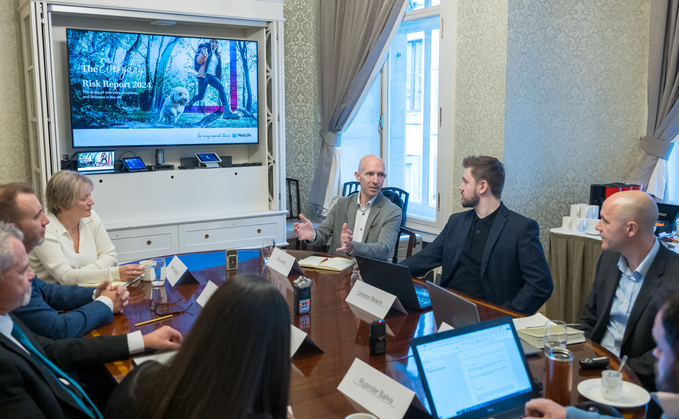
Life, critical illness, and income protection products cover clients for major life events yet smaller, everyday risks are often overlooked – despite new research suggesting they have the potential to significantly disrupt financial stability.
MetLife's Everyday Risk Report sheds light on some of these risks, and how they can severely impact clients' financial stability.
"The stats in there show that 1 in 10 of all hospital visits are for accidents, and 76% of them lead to people staying in hospital," says Rich Horner, Head of Individual Protection at MetLife. Introducing the report at a roundtable discussion hosted by COVER, Horner adds that, given 48% of families have less than £1,500 in savings, "these risks are very real and can have a massive impact on people's lives if they do not have protection."
By focusing on these risks, advisers can show clients how relevant protection can be to their particular lifestyle.
Opening new conversations with clients
"We need to look at how clients experience risks in everyday life — not just the big, life-altering events," says Angela Davidson from Mortgage Intelligence, suggesting that smaller, more frequent incidents may be crucial in initiating meaningful protection conversations with clients.
However, Davidson adds that "a mindset change" is needed – underscoring the need for advisers to expand discussions beyond the "big three" of life, critical illness, and income protection.
Justin Harper, Chief Marketing Officer at LifeSearch, says that the report is a great tool for informing advisers on "everyday risks and the conversations they can have to bring protection to life," and suggests that advisers could even "start conversations with the everyday risks, before discussing the big risks."
Overcoming optimism bias
One challenge advisers face when introducing everyday protection is the client's own optimism bias — the belief that ‘it won't happen to me'.
"People focus on life's big risks and think, ‘I'll deal with that later,' but it's the everyday bumps in the road that can really add up," says Harper. "The report provides advisers with the evidence they need to engage clients and open their eyes to the broader protection picture."
Davidson agrees, adding that advisers sometimes exhibit their own version of optimism bias – assuming clients will only respond to major risks. She suggests that reports like MetLife's help dispel this notion by offering data-backed insights that advisers can use to shift clients' perceptions. "We need to look at how clients experience risks in everyday life – not just the big, life-altering events. These small things can be what drive the most meaningful protection conversations," she says.
Educational gaps and the need for industry collaboration
Education is identified as an important factor in having protection conversations – with panellists advocating for more robust training initiatives that equip advisers with the tools to communicate the importance of everyday risk protection.
Ian Sawyer, Commercial Director at Howden Life & Health, advocates for a collaborative industry approach to training. "We need more centralised resources that can provide comprehensive training on products and advisery skills," he says, suggesting that unified resources would benefit the entire sector, particularly smaller firms without dedicated training departments.
Davidson suggests that ‘soft skills' should not be overlooked and emphasises the need for advisers to broaden their skill sets beyond traditional protection products. "Advisers have built up their defences around conventional products," she notes, suggesting that the industry should equip advisers with the tools to introduce newer, less familiar offerings.
However, panellists note that the Everyday Risk Report is a good starting point. "The power of this report is being easy to absorb and easy to consume from our perspective," notes Harper.
Self-employed and gig economy clients
The report also highlights the unique vulnerabilities of self-employed individuals and gig economy workers. Without the built-in safety nets of traditional employment, these workers feel even short disruptions in income keenly.
Phil Jeynes explains that self-employed clients are often more risk-aware due to their experience of setting up businesses. However, many find that the cost of traditional income protection products, which typically have long waiting periods, can be prohibitive. Everyday risk coverage can provide these clients with accessible protection against shorter absences, offering financial support without high premiums.
Panellists agreed that these clients benefit from relatable, tailored protection options that recognise their unique circumstances and vulnerability to income disruptions. By focusing on everyday risks, advisers can address this often-underserved group, offering coverage that aligns with the realities of self-employment and the gig economy, where income stability can hinge on continued, uninterrupted work.
The future of everyday protection
Looking to the future, Horner sees the Everyday Risk Report evolving into an annual publication that advisers can rely on to keep their conversations fresh and relevant. "We want this to be a lasting resource that advisers can return to consistently," he said.
Horner says that future editions of the Everyday Risk Report, will include more real-life case studies, which could help advisers make even stronger connections with clients. "Stories are what make these risks real. When clients hear examples that mirror their own lives, they start to understand the value of everyday protection," he says.
MetLife's focus on everyday risk marks a promising step toward a more inclusive protection landscape. By addressing clients' immediate needs, fostering collaboration, and building adviser confidence, the industry can help close gaps left by traditional products and create a more resilient financial future for all.










